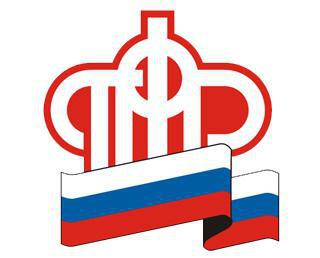The economic and social essence of insurance is to provide insurance coverage to those who apply for it. This simple concept hides the system of protecting a person, his health, property, financial savings and other values, formed on the basis of centuries-old traditions, by creating special reserve funds. Thus, the protection and preservation of property and other interests is the main objective of insurance.
The purpose of insurance
To solve this problem, the corresponding goal of insurance activity was formed, which seems to be in full or partial recovery of losses. Sources of such recovery payments are insurance funds created by specialists. Thus, the creation of funds contributes to the restoration of property, health, working ability and personal incomes not only of direct participants in these funds, but sometimes also of third parties.

Insurance Fund - what is it?
This enterprise is a combination of the company's reserves, expressed in naturalized and cash form. These stocks are used to prevent and recover damages caused by natural disasters and emergency situations. The economic basis of insurance is the process of creating and spending insurance funds.
Varieties of insurance funds
In total, three types of organization of insurance funds are historically known. The first - a decentralized form is a fund in one single enterprise. This is an isolated structure. Fund funds are earmarked, collected and spent within the same enterprise, where the so-called self-insurance takes place. This type of fund is created in the form of actual reserves, which must be renewed annually. The second centralized form is characterized by the fact that the source of education can be resources of a national, regional and local scale. Such funds provide compensation for losses from accidents, disasters and unforeseen situations on a national scale.

Funds are formed by paying insurance premiums by individuals and legal entities. Such a fund can only be in cash, and is represented by an insurance company. Such a form as an insurance company is a joint venture where the signs of the above forms are combined. The result of insurance activity is a decentralized formation of the monetary fund, the main source of which is the receipt of insurance premiums, payments and deductions from income. This fund has a strictly targeted nature and is created with the aim of organizing a closed layout of damage, it functions and is used centrally.
Extrabudgetary insurance funds - the aggregate of funds that are at the disposal of central or local authorities, while they have a purpose. Depending on this, they are divided into economic and social.
TO social Funds include: Pension Fund, Compulsory Health Insurance Fund, Compulsory Social Insurance Fund.
Compulsory social insurance is part of the state form of social protection of the population, insurance is provided for working citizens against possible changes in their material and (or) social status, including for circumstances beyond their control.
Pension insurance fund
Pension insurance is a type of long-term life insurance, in which the policyholder pays lump sum or installment payments, and the insurer fulfills the obligation to pay the pension to the insured person.
That is, compulsory pension insurance (OPS) is the system of forming a source of financing for pensions. Citizens are insured persons. When an insured event occurs (retirement age or disability), the Pension Fund pays a pension either in old age or in disability.
Where does the fund come from?
These monetary funds include reserve funds and reserves. The aggregate fund receives the bulk of the funds from transactions aimed at voluntary life insurance. Mixed life insurance is carried out on a contractual basis. Contributions are paid in installments during the insurance period or at a time, and the sum insured is paid upon the occurrence of the insured event, thus temporarily free funds appear. Currently, the third form of mixed insurance is actively expanding and developing.

How to make insurance contributions to funds? About it further.
Fund creation principle
Insurance companies create individuals or enterprises by making contributions, however, it is clear that only a small number of losses will need compensation for them, since the probability of an insurance event for everyone is immediately unlikely. In the insurance process, the damage caused is distributed among all participants, at the expense of the contributions of which the insurance fund was created. The larger the number of insurers, the lower the proportion of damage to each of them and the greater the concentration of funds in the insurer's fund. Thus, the resulting losses and losses of policyholders are compensated with relative completeness due to the value of the generated cash funds. Insurers' contributions have only one purpose - this is compensation for the established share of losses in a certain period of time. Based on the assumption that risk transfer mechanisms are implemented through the creation of insurance funds, it can be said that the amount of contributions paid to this fund should be fair for all its participants.
This is the basis for insurance contributions to the Pension Fund.
Insurance risks
Each member of the fund comes to the insurance company, having risks of varying degrees and wanting to transfer them to insurance. For example:
- a wooden house is a greater danger than a brick house;
- An 18-year-old young man who has just received a driver’s license poses a potentially greater risk than an experienced driver;
- an overweight client is more likely to die early than an average person;
- manual workers are more likely to be injured than office workers, which is why they need insurance.
An enterprise insurance fund can help in case of disaster.

findings
All of the above allows us to draw the following conclusions:
- For the payment of potential losses in the event of losses, contributions to the insurance company must be sufficient, as well as the size of the perceived risks and the value of the property and other factors.
- Insurance premiums must be satisfactory for the formation of a reserve from which extraordinary damage is covered in adverse years, they must compensate for the administrative expenses associated with the management of this fund, and also guarantee the insurance company a certain rate of return. When determining the size of insurance premiums, it is necessary to take into account the two above-mentioned principles, and it is also necessary to make sure that the premiums to the insurance company of each particular client are comparable to the premiums of others, taking into account the nature and magnitude of their risks. In addition, the amount of contributions in aggregate should create the opportunity for competitive maneuvers in the market.

Functions of insurance funds
The main functions that insurance funds perform are: risky, funded, preventive and investment.
The risk function is that the funds of insurance funds are sent only to those insurers who have an insured event. This feature is considered universal. Insurance may not have an accumulative or preventative function, but risk is always present. Actually, the absence of a risk function would call into question the very possibility of insurance in principle.
The funded function is associated with family budget insurance coverage. With its help, the stipulated sum of money from the contributions of the insured is accumulated and paid out upon the occurrence of the insured event. Insurance contracts aimed at the formation of insurance savings always contain a list of cases that are considered insurance and are compensated by the insurer.
The preventive function is to prevent the occurrence of insured events and minimize losses from their occurrence. The implementation of this function involves the implementation of preventive measures at the expense of social insurance funds aimed at preventing or preventing the consequences of various kinds of disasters and accidents. This function is very important, for example, when insuring an upcoming crop or when insuring cargo, against fires and explosions. Funds allocated for preventive measures are formed from customer contributions, and these expenses are included in insurance traffic without fail.
The investment function is carried out in connection with the technique of insurance operations. The insurer places the formed funds in the areas recommended by the supervisory authorities.

The purpose of this placement is to receive a certain income, which is then sent to the fund to replenish the insurance reserve. As such financial instruments, short-term and long-term government bonds, securities of highly profitable enterprises can be acquired, funds can also be placed on deposits, and precious metals may be purchased. The investment function ensures financial stability and break-even of the insurance company.
The Russian insurance fund is supposed to pay contributions. The law establishes the amounts that repay certain categories of citizens in certain periods.
So, insurance in general (insurance funds in particular) acts as a means of protecting business and the interests of individuals. In addition, insurance is a profitable business. The insurer's income comes from direct insurance activities, as well as from investment investments of temporarily free financial resources. For the fund to exist successfully, the insurer's income must be balanced by its costs, which are payments under insurance contracts and the costs of maintaining the company.